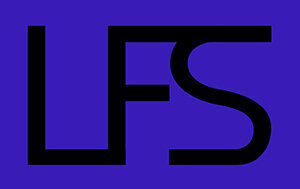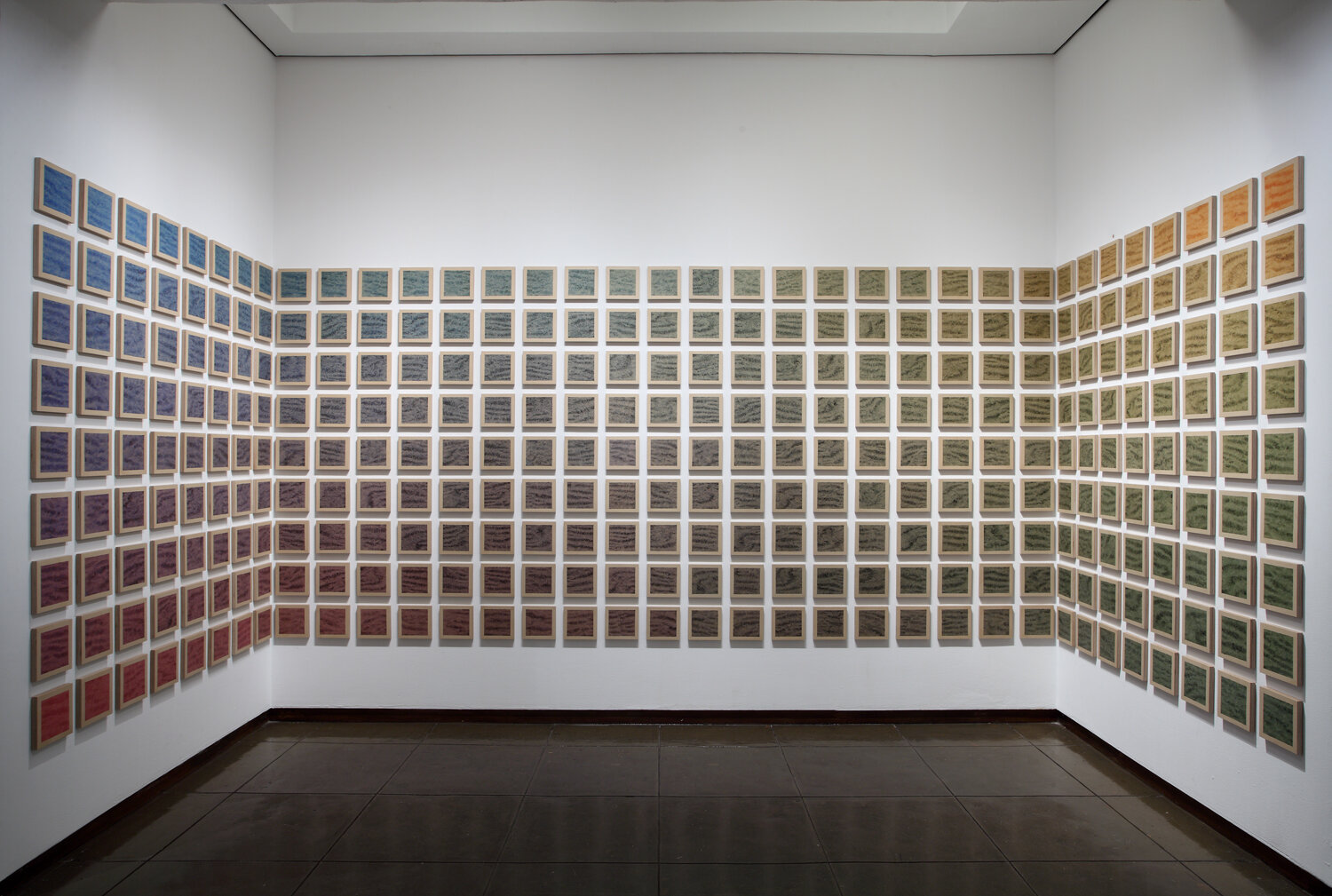Holding Light 4
Installation images below of Holding Light 4 at Charlotte Jackson Fine Art and the New Mexico Museum of Art.
Click on any image below for a Light Box view
"Holding Light 4" @ Charlotte Jackson Fine Art, 2014
"Holding Light 4" @ Charlotte Jackson Fine Art, 2014
"Holding Light 4" @ Charlotte Jackson Fine Art, 2014
"Holding Light 4" @ Charlotte Jackson Fine Art, 2014
"Holding Light 4" @ New Mexico Museum of Art, 2012
"Holding Light 4" @ New Mexico Museum of Art, 2012
"Holding Light 4" (detail) @ New Mexico Museum of Art, 2012
"Holding Light 4" (detail) @ New Mexico Museum of Art, 2012
"Holding Light" (single piece before mounting)
"Holding Light" single panel
"Holding Light" single panel detail
Holding Light 4, 2012
graphite and watercolor on recycled paper on birch plywood
315 panels
7 x 7 x 3/4 inches each / 101.6 x 96.5 x 5 cm
79 x 312 inches (variable)
If you would like to have real-time information about this piece please call me or send me a Text Message @ 505.699.3146.
Holding Light 4 is an installation of 315 monochromatic watercolors on archival recycled paper mounted on maple plywood panels, 7 x 7 inch each. It is a chromatic scale shifting horizontally, vertically and diagonally. The four corner pieces are the key colors for this scale and the remaining 311 watercolors are a specific proportional formula of these four colors - with the center watercolor being an equal 25% mix of each of the four corner colors.
While the formulae for each piece is pre-determined, the act of painting each piece is unplanned, intuitive and improvised. Small brush strokes of watercolor define, trap and leave exposed tiny points of the paper. Each point of exposed paper is counted and a mark of the same watercolor is made for every 100 points, then totaled once the piece is finished. The count in each piece ranges from approximately 2,500 to 4,500 points of negative space and these notations are documented on the back of each panel. The total number of “Points of Light” in the 315 pieces is over one million.
The color palette for each of the four corner colors was determined and inspired by the light, natural environment and landscape of New Mexico. The paper was selected specifically for its archival nature, the fact that it is recycled from post consumer waste, to soften the colors and for its sizing - so that it “holds” the watercolor in place as I paint as opposed to bleeding. The overall look of the piece and part of the inspiration for its inception, despite its vastly different scale and medium, has a relationship and dialogue to the woodblock prints of Gustave Baumann.
I generally paint in an abstract expressionist mode – frenetic, unrestrained and intuitive. Successive layers of paint on my large paintings become infinite points of textural highlights and are the unintentional result of the process of untold marks. They recall the unfathomable and infinite variety of the macrocosm. This is the genesis for these watercolors, which, in relationship to my large paintings, can be seen individually as relating to the infinite variety of the microcosm.
I have long been intrigued by the sensitivity of watercolor; it is direct, unforgiving and intimate. Painting these watercolors correlates to the practiced meditation of yoga, as does the counting of the points of light. They are mantras. In as much as watercolor painting is in direct opposition to the countless-ness of the large paintings, it is an exercise in placing my studio practice in the immediate, the present, the personal and the spontaneous.
Counting the points is my attempt to give “definition” to each watercolor - each microcosm. Ultimately that is impossible. Never the less I am compelled to try – to define – to count (like all humans struggle to give definition to their lives) and in doing so I am ultimately “pointing out” the indefinable nature of our existence. And while we can give definition to our lives, indeed - aren’t we all striving for just that, the possibilities are infinite and our futures unpredictable.
—Lawrence Fodor
Process video of Holding Light 4
Holding Light 4, (detail), 2012, graphite and watercolor on recycled archival paper, 79 x 312 inches overall
Lawrence Fodor / Holding Light
In nature, light creates the color. In the picture, color creates the light.
—Hans Hofmann
Lawrence Fodor is best known for his opulent and densely layered paintings representing the sublime force of earth and sea - the heft, splendor, and profusion of existence. They are commanding, expressive, and vigorous. Regardless of scale they have a substantial presence, deeply grounded in the colors and textures of the natural world. In the words of art critic Sarah King for Art in America “these compositions often suggest lush vegetation, desert, sky or water perceived from close angles.” The sculptural tiers of rich paint, wax and alkyd evoke a visceral desire to breathe in the scent of resonant oil and run one's fingertips over their lavishly textured surfaces.
Fodor’s new body of watercolor on paper is a stunning departure. It is a shift in scale, medium, process, and impact. Delicate strands of monochrome paint loop and interlace atop small squares of archival paper mounted upon a block of apple plywood. At each intersecting line of color a tiny form emerges - a glimmering point of light beneath a complex web. Dapples of negative space flicker and undulate beneath tangles of watery paint.
These paintings are disconcerting in scale – at just 7 by 7 inches they belie their size and feel vast and limitless. Their impact lies in the incalculable space between mark and omission, presence and absence, pigment and void. They are spider webs, honeycombs, oceans, galaxies. As Fodor describes, “The small paintings begin as a microcosm or a meditation on the finite in order to access the infinite or the external. I have always thought that the only way to access the infinite, the universal, or the collective unconscious was to go deep within the personal.” Or in the words of author Henry Miller, “the moment one gives close attention to any thing, even a blade of grass it becomes a mysterious, awesome, indescribably magnificent world in itself.”
Each carefully placed line of watercolor circumscribes a space of untouched paper - a spontaneous flash of light and beauty. Fodor counts each point as it is created. He makes a line on the page for every 100 points of light that appears, then makes a notation of the numeric on the reverse of each block of plywood - the total number ranging in the works from 1,600 to 4,300. Each small painting is then added to a larger grid, creating a matrix of hundreds of thousands of small points of shimmering light. There is a tension in each piece between the meticulous rigor of process and installation and the twinkling chaos that explodes from each small painting.
The precise detail of the work brings to mind Vija Celmins’ delicate graphite drawings of night skies, spider webs, and oceans. As described by curator Poul Erik Tøjner, her “gaze from the small sheet of paper out into the starry oceans of the universe expresses what the intimate format can contain: everything from the smallest to the greatest.” The organic and infinite undulations of Fodor’s paintings have a clear visual connection to Yayoi Kusama’s infinity nets, described by the artist as "without beginning, end, or center. The entire canvas would be occupied by [a] monochromatic net. This endless repetition caused a kind of dizzy, empty, hypnotic feeling."
The simplicity of abstraction and pursuit of beauty also bears a close relationship to Agnes Martin. Deeply guided by Eastern philosophy, Martin explored in her paintings the abundance, mystery, and beauty of existence with painstaking simplicity. In her words, “Beauty and happiness and life are all the same and they are pervasive, unattached and abstract and they are our only concern. They are immeasurable, completely lacking in substance. They are perfect and sublime. This is the subject matter of art.”
Beyond all art historical reference, however, these watercolors trace the trajectory and continuum of Fodor’s own artistic process. Light radiates from the rich oil paintings as a result of the viscosity of the medium, its impasto-like texture, months of adding layer upon layer of paint. The small watercolors shimmer with spare simplicity, the beauty and mystery of the space left untouched. Points of light shimmer through each delicately painted line, radiance emerging through intentional omission.
—Cyndi Conn

Holding Light 4, detail


















